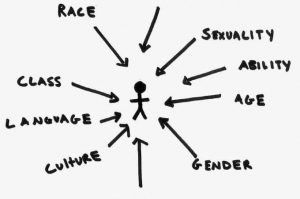Structural inequality is a barrier that many people, particularly individuals from underrepresented backgrounds, are faced with. It is important to acknowledge these barriers as sadly, the playing field is not equal and many institutions use this to prevent others from succeeding.
What is structural inequality? It is a system that creates conditions where one category of people have an unequal status in relation to another category of people. This is systematically rooted in the normal operations of social institutions such as education, employment, laws an regulations and healthcare. A personal statistic that is alarming for me is the fact that in healthcare, black women are 5x more likely to die in childbirth over their other racial counterparts. Some of you may be thinking ‘why is this the case?’. Well, it is deeply rooted in history. During slavery, black people were treated as subhuman and it was believed that they couldn’t feel pain. This myth and mindset has translated into modern day and is why black people are often not taken seriously when they express any pain they are feeling. This is only one example out of many that people with characteristics pertaining race, sexuality, gender, religion and disabilities are forced to deal with.
Michael Kimmel did a great TED talk where he explained why gender equality is beneficial to everyone, especially men. He talks about going to a focus group where he asked the participants what they see when they look in the mirror. A white woman answered and says that she sees ‘a woman’ and a black woman replies with ‘a black woman’. The white woman says to the black woman “but we are both women, why did you mention your race”. The black woman then went on to explain that even though they are both women, in her world she is constantly reminded of her race and faces more discrimination, whereas the white woman simply sees her gender. Kimmel went on to say that “privilege is invisible to the people that benefit from it” which highlights that the individuals least affected by structural inequality are blind sighted by it. Structural inequality isn’t simply a man vs woman debate but encompasses other factors such as race and class.
There are significant structural and intersectional inequalities present in the labour market that you will all be graduating into. An example is that people of colour are less likely to get called for an interview based on their names than white people and its effect is particularly pronounced for black Britons and those of Pakistani origin. There are other structural inequalities which include the amounts of time students can spend on researching careers while studying, how much access they have to ‘career boosting’ networks and how much confidence students have in accessing those networks.
As many as 50% of leading people in a range of professions (politics, media, law, film, the arts, music, elite sports etc) attended private schools, despite comprising only 7% of the population. This is a clear indication that it can extremely difficult to get high paid jobs if you don’t come from a certain background. There should be equal opportunities for all as your school doesn’t determine how well you lead, it is the individual that determines that.
Structural inequality is a system that we can tackle together so that people from underrepresented backgrounds can achieve their goals without barriers. Every single person brings value and perspective; your race, sexuality, religion, gender or disability shouldn’t stop you from fulfilling your potential. Always remember that if you are from an underrepresented background, King’s have many schemes and initiatives in place to support your future career. Visit our dedicated KEATS page for more details. Alternatively, if you would like to learn more about structural inequality or diversity in general, have a listen to my podcast on YouTube or on streaming platforms.
